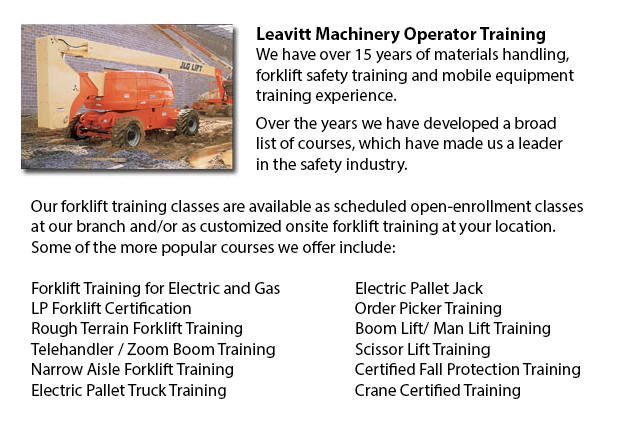
Aerial Platform Training Kelowna - Aerial platform lifts are able to accommodate numerous odd jobs involving high and tough reaching spaces. Sometimes utilized to carry out daily upkeep in structures with lofty ceilings, prune tree branches, hoist burdensome shelving units or repair phone cables. A ladder might also be used for many of the aforementioned tasks, although aerial hoists offer more security and stability when correctly used.
There are many designs of aerial platform lifts available on the market depending on what the task needed involves. Painters often use scissor aerial hoists for example, which are grouped as mobile scaffolding, useful in painting trim and reaching the 2nd story and above on buildings. The scissor aerial hoists use criss-cross braces to stretch and lengthen upwards. There is a platform attached to the top of the braces that rises simultaneously as the criss-cross braces lift.
Bucket trucks and cherry pickers are another type of aerial hoist. They contain a bucket platform on top of an extended arm. As this arm unfolds, the attached platform rises. Lift trucks use a pronged arm that rises upwards as the handle is moved. Boom lift trucks have a hydraulic arm that extends outward and hoists the platform. Every one of these aerial hoists have need of special training to operate.
Training programs presented through Occupational Safety & Health Association, known also as OSHA, deal with safety steps, system operation, maintenance and inspection and machine load capacities. Successful completion of these education courses earns a special certified certificate. Only properly licensed individuals who have OSHA operating licenses should drive aerial lifts. The Occupational Safety & Health Organization has established rules to maintain safety and prevent injury while utilizing aerial lift trucks. Common sense rules such as not utilizing this machine to give rides and ensuring all tires on aerial lift trucks are braced so as to hinder machine tipping are observed within the rules.
Sadly, figures reveal that more than 20 aerial lift operators pass away each year when operating and nearly ten percent of those are commercial painters. The majority of these mishaps were brought on by improper tie bracing, for that reason many of these could have been prevented. Operators should make certain that all wheels are locked and braces as a critical safety precaution to stop the machine from toppling over.
Marking the encompassing area with observable markers have to be utilized to protect would-be passers-by so they do not come near the lift. Also, markings must be set at about 10 feet of clearance between any electric cables and the aerial hoist. Lift operators should at all times be properly harnessed to the hoist while up in the air.
-
Counterbalance Forklift License Kelowna
Counterbalance Forklift License Kelowna - Forklifts, when operated by completely trained workers, are a major advantage to companies. We offer a thorough training program consisting of all parts of operating a powered lift device. Counterbalance fork... More -
Forklift Certification Schools Kelowna
Forklift Certification Schools Kelowna - Within North America, forklift certification is mandatory, making forklift training programs important for both the company and their employees working as forklift operators. Forklift training focuses on healt... More -
Manlift Operator Certification Kelowna
Manlift Operator Certification Kelowna - We provide a scissor platform and aerial lift training and certification to empower the trainee with the general understanding and knowledge of the safe and efficient utilization of "Power Operated Mobile Work... More -
Crane Training Schools Kelowna
Crane Training Schools Kelowna - We have designed several programs for Mobile Crane Operation at our Crane Training Schools. These programs are recommended for the experienced operator who requires re-certification or certification, and for inexperie... More -
Heavy Equipment Operator Classes Kelowna
Heavy Equipment Operator Classes Kelowna - A heavy equipment operator is a person who has received the proper training to operate a particular type or piece of machine. There are a lot of ways for the operator to undergo training and certification in... More -
Telehandler, Rotational Telehandler, Zoom Boom Training in Kelowna
Telehandlers or also known as Telescopic handlers are really popular piece of heavy construction equipment normally utilized in agriculture and construction trades. These equipments have extreme reaching capability and could get to places where a tra... More -
Zoom Boom Training Kelowna
Zoom Boom Training Kelowna - Zoom Boom Training is intended to train operators on variable reach forklifts. The goals of the training are to impart an understanding of the physics of the equipment, and to outline the operator's tasks. This course fol... More -
Boom Lift Safety Training Kelowna
Boom Lift Safey Training Kelowna - Boom lifts fall under the type of elevated work platform or aerial lifting device. Most normally utilized in construction, industry, and warehousing; the boom lift is so versatile that it can be utilized in almost w... More

Forklift Training Kelowna
TOLL FREE: 1-888-254-6157
Kelowna, British Columbia
forklifttraininginkelowna.com
Email Us
About Us


